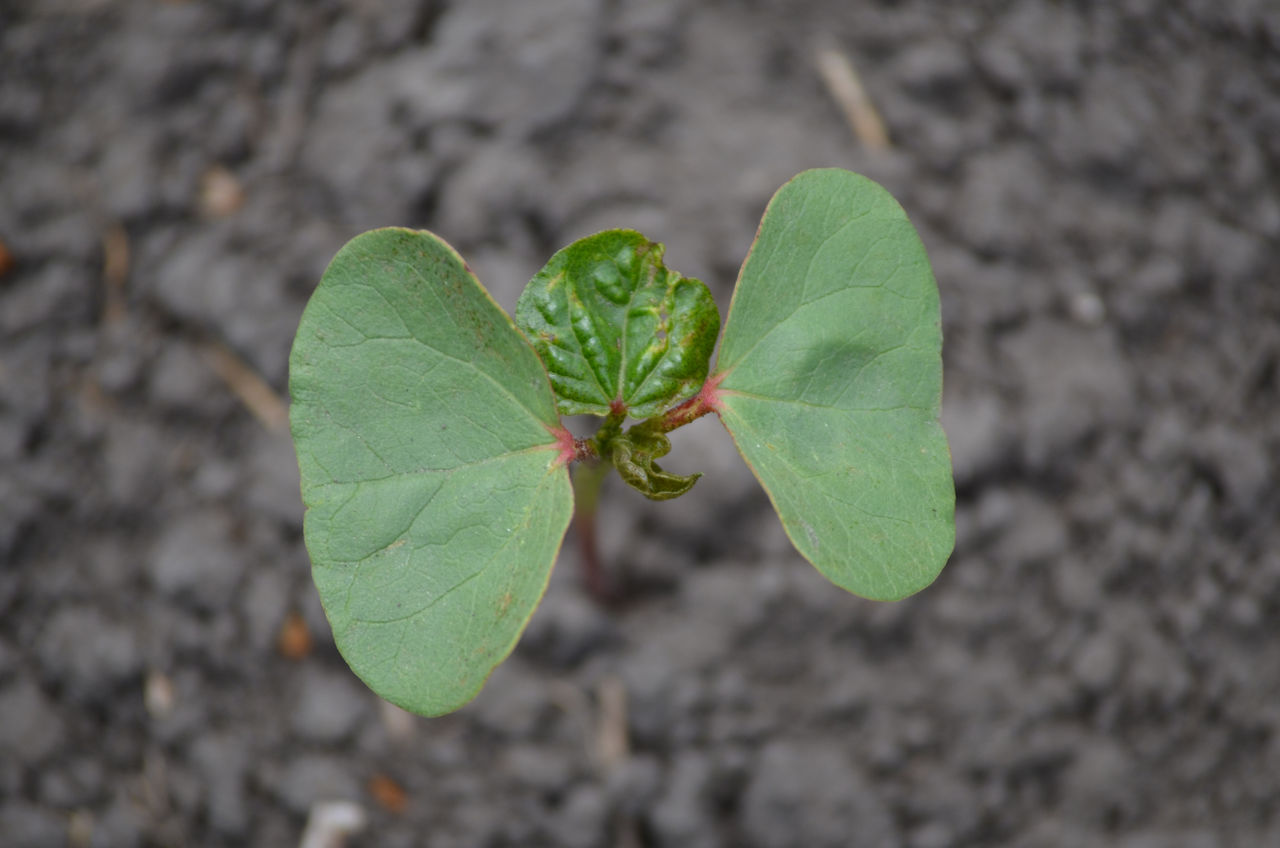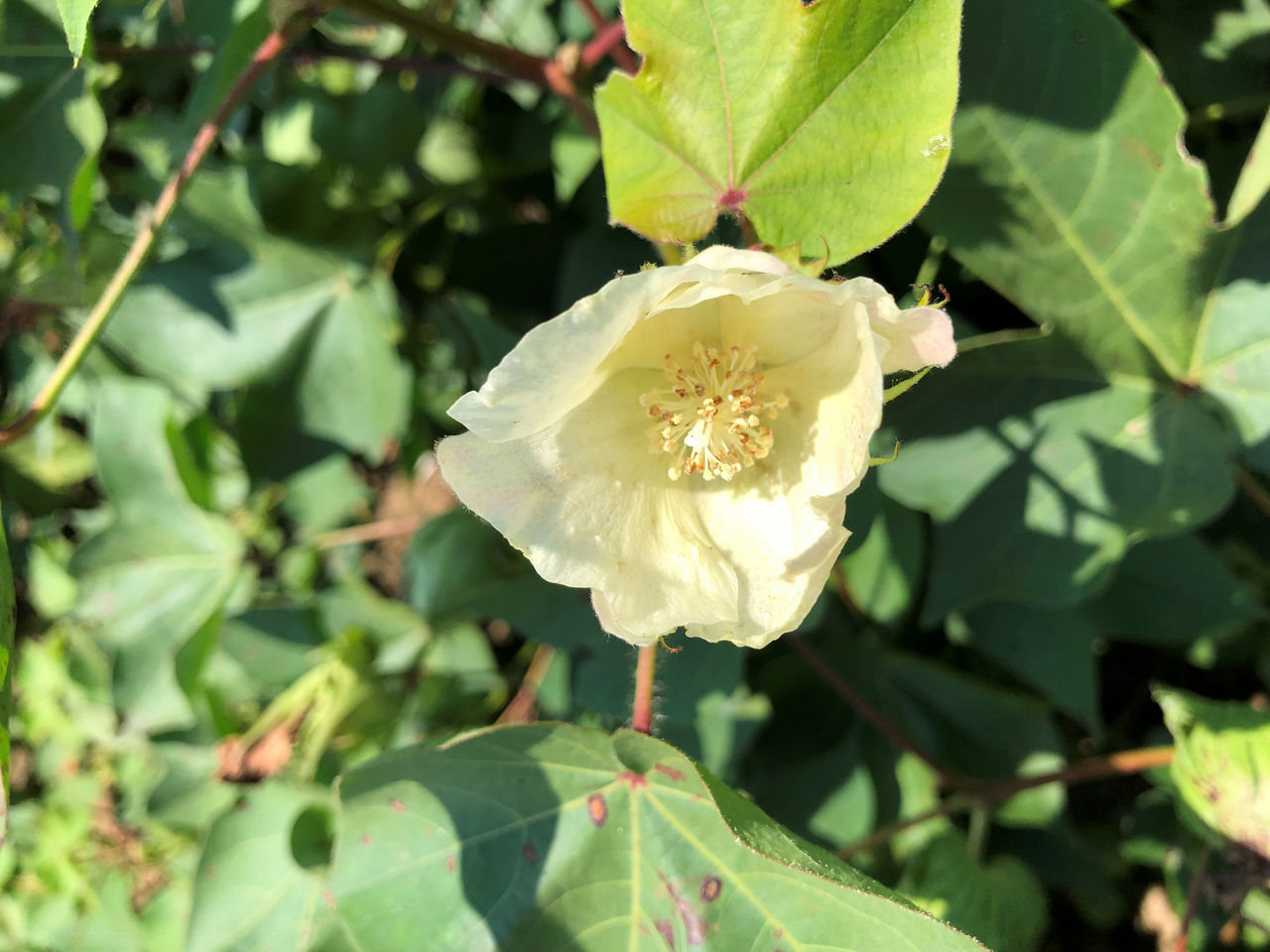Managing Late-Planted Cotton
June 3, 2024
- Delayed planting limits the time and heat units available for the production and maturation of cotton bolls.
- Starting with a healthy stand can help provide a strong start for a shortened growing season.
- Protecting early set bolls is a high priority for late-planted cotton.
Late-planted cotton can have a shorter window to bloom, so it is imperative to manage the crop for earliness and to promote and protect first-position boll production. Late-season boll maturity can be delayed with declines in daily heat unit accumulation in the fall. With careful management, late-planted cotton can produce a successful and productive crop. Starting with an ideal stand can help decrease susceptibility to pest damage and provide a strong start for a shortened growing season.
Early-Season Management
Seeding Rate. Avoid low seeding rates, particularly in the northern tier of the Cotton Belt where heat unit accumulation may be limited. Higher seeding rates can help increase the proportion of first-position bolls, which are set with a lower heat unit interval than second- and third-position bolls.1 When heat unit accumulation is reduced, first-position bolls are more likely to mature than bolls set further out on fruiting branches.
Avoid Excess Nitrogen. Late-planted cotton should receive about two-thirds to three-fourths of the full-season rate of nitrogen (N). All N should be applied prior to or at first square.1 Excessive N application can lead to unnecessary vegetative growth and delay maturity. Delaying N application until closer to first square can help shift the crop into reproduction faster than a large application at planting.2 Growers should consider soil types, environmental conditions, and experience as they evaluate the need for additional N on late-planted cotton. Other nutrient applications should be applied according to soil test results.
Variety Selection. Depending on the available growing season, planting either the variety originally planned for the field, a “hardy” or more stress tolerant variety, or an earlier maturing variety may be recommended.
Seed Treatment. Seed treatments can help reduce injury from insects, diseases, and nematodes that may be more established in the field at a later planting date.

Insect Management. Thrips damage to the growing point or terminal bud of cotton seedlings (Figure 1) can delay plant growth, but generally late planted cotton grows fast enough that thrips damage is a minor concern.2
Weed Management. Plant into a weed-free seedbed and apply effective preemergence herbicides to help keep weeds suppressed. Use of residual herbicides is highly recommended, and timing application shortly prior to precipitation or irrigation can help increase herbicide effectiveness.1
Irrigation. Apply irrigation or plant into moisture to help establish a uniform and vigorous stand.3
Mid-Season Management
Plant Growth Regulators. Late-planted cotton should be managed with plant growth regulators (PGRs) more aggressively to help control the rapid vegetative growth because of higher daily heat unit accumulation. For fields with adequate precipitation or irrigation, apply multiple applications beginning at matchhead square. In fields with low soil moisture, delaying application until flowering can help reduce the risk of excessively reduced vegetative growth in the event of a drought.4 PGR rates and application timing should be adjusted according to variety selection and environmental conditions. With timely PGR applications along with appropriate irrigation and fertility management, the fruiting cycle can be successfully managed by monitoring nodes above white flower (NAWF) for a cutout goal of 4 or 5 NAWF by the last effective bloom date. This management helps lead to a successful late-planted crop.

Insect Management. Plant bugs and stinkbugs are major pests of late-planted cotton, and the crop should be managed carefully from early flowering through the last effective flower to protect yield potential.2 Caterpillar pests may also be a concern throughout the season.1 Fruit loss due to insect damage can stimulate vegetative growth, delay maturity, and eventually reduce yield potential. Early and frequent scouting is necessary for identifying potential insect infestations and triggering timely insecticide applications. Keep insect pests below threshold levels to help maintain early-season fruit retention above the target of 80%, which can reduce excessive vegetative growth and increase the potential for a productive early crop.4
Weed Management. The same heat units that stimulate rapid growth in late-planted cotton can stimulate weed germination and growth. Continue weed suppression by following up with timely postemergence (POST) weed control. However, late over-the-top herbicide applications and poor POST applications can cause boll loss, delayed maturity, and loss of yield potential.4
Irrigation. Irrigation should be managed to maintain boll retention during typically dry periods.3
Late-Season Management
Timely Cutout. Cutout is the end of the boll loading period and occurs when at least 50% of the plants in a field have reached five nodes above white flower. The goal of managing late-planted cotton is to reach cutout before the season runs out of sufficient heat units to mature the crop. One risk of late-planted cotton is reaching the last effective bloom date (based on historic heat unit accumulation) before the crop has reached cutout.1
Apply a defoliant according to harvest planning and air temperature. Defoliants require temperatures of above 60 °F to be effective. Include an ethephon-based harvest aid to help increase the number of bolls ready for harvest.4 Late-maturing bolls open slowly due to cooler temperatures, so delaying defoliation in the hopes of allowing late-set bolls to mature could result in reduced yield potential and reduced fiber quality.
Sources
1Barber, T., Lorenz, G, and Smith, K. Recommendations for late planted cotton. University of Arkansas Division of Agriculture. https://www.uaex.uada.edu/farm-ranch/crops-commercial-horticulture/cotton/Managment%20of%20late%20planted%20cotton.pdf#search=Recommendations%20for%20late%20planted%20cotton
2Raper, T. 2024. Yield potential and management of late planted cotton. The University of Tennessee Institute of Agriculture. https://news.utcrops.com/2024/05/yield-potential-and-management-of-late-planted-cotton/
3Hand, C. (Ed.) 2023. Variety selection. 2023 Georgia Cotton Production Guide. The University of Georgia Cooperative Extension Service. https://extension.uga.edu/publications/detail.html?number=AP124-3&title=2023-georgia-cotton-production-guide/
4Craig, C. 2010. Managing late-planted cotton. The University of Tennessee Extension. W074. https://trace.tennessee.edu/cgi/viewcontent.cgi?article=1086&context=utk_agexcrop
1410_413923